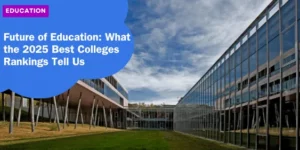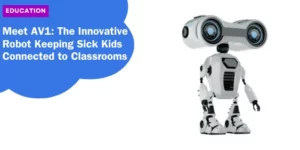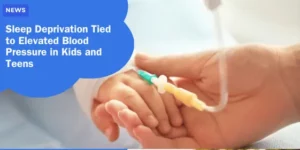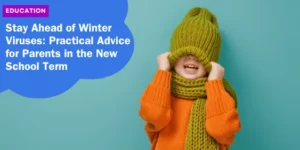Private Education, Public Funding
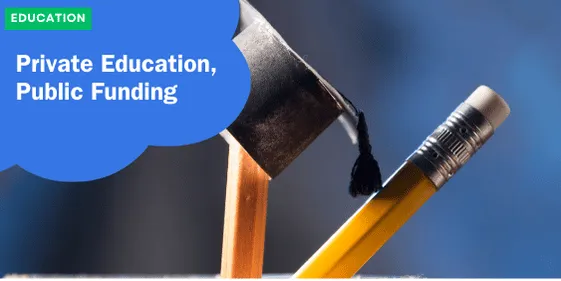
The vast majority of American students enroll in public schools.
However, this number is steadily decreasing.
In more than half of the states, parents now have the option to use public funds to educate their children through various means, including homeschooling, online education, and private schools.
According to recent research from EdChoice, an organization that supports private-school choice and monitors the sector, this year has seen a million students utilizing some form of private education voucher.
This marks more than double the number seen just four years ago.
The outcome is a burgeoning movement in “choose-your-own-adventure” education.
Parents are now allowed the flexibility to select any program that aligns with their beliefs and best suits their children’s needs.
Nevertheless, it remains uncertain how accountability or standards will be maintained outside the traditional school system.
Drivers Behind This Change
The Impact of the Pandemic
One of the significant catalysts for this shift is the pandemic, which led many families to reevaluate their children’s learning environments.
The extended periods of remote learning and the disruptions to conventional schooling forced parents and students alike to look for alternatives that could provide a more stable and tailored educational experience.
Political Influence
Additionally, Republican lawmakers have aggressively championed private-school choice as part of a broader agenda centered on parental rights.
They see this as an attractive issue that could appeal to young parents, particularly those in Black and Latino communities, who may be disillusioned with the public education system’s efficacy.
These lawmakers argue that by giving parents more choices, educational outcomes can be improved.
Educator Burnout
Another contributing factor is the severe burnout experienced by many teachers.
Faced with unprecedented challenges, some educators are opting to leave public schools to establish small businesses that can accept education vouchers.
These alternative educational institutions, often referred to as “microschools,” offer a more personalized learning experience and are seen as a respite from the public education system’s pressures.
In a recent article from The Times, I explored these emerging microschools.
In today’s discussion, we will delve into why parents are increasingly opting out of public education and the potential implications for how the U.S. educates all its children.
What’s the Appeal?
First-Hand Accounts from Parents
During a week-long visit to the Atlanta area, conversations with parents who transitioned their children from public schools to microschools revealed diverse motivations.
These microschools can enroll as few as six students and, although many are operated by career educators, are largely unregulated, allowing virtually anyone to start one.
Financial Incentives
Starting next year, Georgia will begin offering $6,500 per family through an education savings account to those withdrawing their children from schools that rank in the bottom 25% academically.
Parents I spoke with expressed intentions to use this money for various educational needs, including microschools, homeschooling supplies, therapy, and tutoring.
Diverse Motivations
Some parents, driven by Christian conservative values, aim to have the Bible included in historical education.
One mother voiced concerns about LGBTQ educators in public schools and what she perceived as an undue emphasis on gender and race issues.
However, more commonly, parents cited general dissatisfaction with their children’s progress in public schools.
For example, Nicole Timmons noted that her 15-year-old daughter, Sienna, was stagnating academically in public school.
Sienna now attends C.H.O.I.C.E. Preparatory Academy, a microschool in Gwinnett County that predominantly serves Black students.
On a visit to C.H.O.I.C.E. Preparatory Academy, I observed around 40 students, ranging from 8 to 17 years old, engaged in activities such as studying Greek and Latin word roots and constructing basic electromagnetic motors in small groups.
This kind of individualized attention and specialized curriculum is a significant draw for many families.
Shifting Political Landscape
New Political Vocabulary
The rise in nontraditional education has brought with it new political terminology.
Conservatives who advocate for public funds to be given directly to parents for these alternative educational programs seldom talk about vouchers anymore.
Instead, there is now a focus on giving money via education savings accounts and promoting terms like “entrepreneurship” and “permissionless education.”
This approach emphasizes an educational landscape free from teachers’ unions, curriculum mandates, and minimal standardized testing.
Accountability Concerns
One of the most pressing questions surrounding this shift is the issue of accountability.
Traditional public schools operate under stringent regulations designed to ensure a standard quality of education.
As more students move to alternative forms of education, it remains uncertain how these new institutions will be monitored.
The lack of regulation means that the quality and curriculum can vary significantly from one microschool to another, raising concerns about educational equity and consistency.
Potential Implications
This significant shift in educational preference has wide-reaching implications for public education in the United States.
It raises questions about the future role of public schools and how they can adapt to a landscape where many parents are seeking more control over their children’s education.
Funding and Resource Allocation
One immediate concern is the impact on funding and resources for public schools.
Public education funding is typically tied to student enrollment numbers.
As more students leave public schools, these institutions could face budget cuts, further straining their ability to provide quality education and possibly creating a cycle of decline.
Education Standardization
Another consideration is the standardization of education.
Public schools follow state-mandated curriculums to ensure that all students receive a consistent education.
The rise of microschools and other private educational options could lead to a more fragmented educational system, where students receive widely varying levels of education quality and content.
Legal and Policy Changes
Additionally, the growing trend towards private education could prompt significant changes in education laws and policies.
There could be increased debates over the use of public funds for private education and discussions about the need for greater regulation and oversight of these new educational establishments.
Social Implications
Lastly, there are social implications to consider.
Public schools have traditionally been the place where children from diverse backgrounds come together, promoting social cohesion and mutual understanding.
The shift towards smaller, more specialized educational environments could lead to increased social fragmentation.
Conclusion: Navigating the Shift
As private educational options become increasingly popular, it is crucial to navigate this shift thoughtfully.
While the flexibility and personalized attention offered by microschools and other private educational options can benefit many students, it is essential to address the potential downsides, particularly regarding accountability and equity.
By understanding the drivers behind this change and its potential implications, policymakers, educators, and families can work together to ensure that all children receive a high-quality education that meets their needs and prepares them for the future.
This conversation is just beginning, and it will be essential to monitor its evolution as more families explore alternative educational paths.
In summary, the trend towards private education funded by public money signifies a significant transformation in the U.S. education system.
This shift presents both opportunities and challenges, emphasizing the need for a balanced approach that prioritizes both innovation and accountability.

